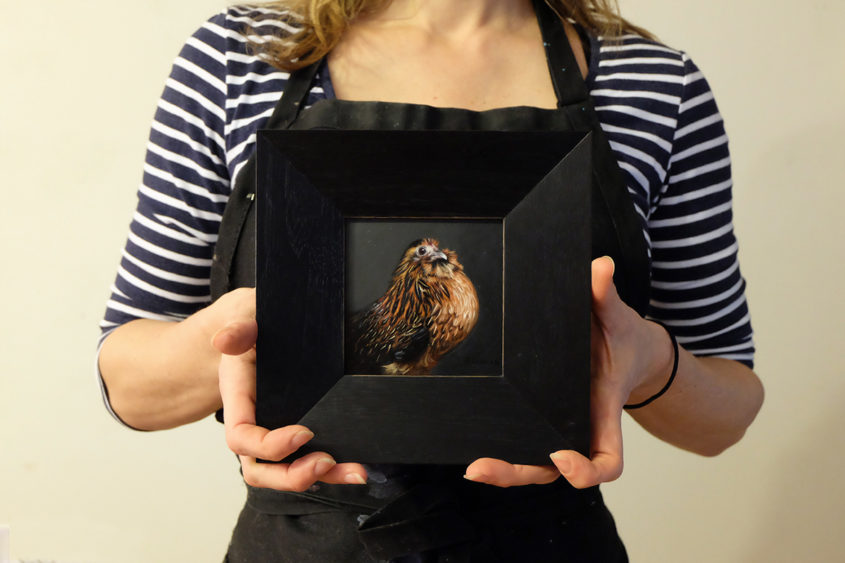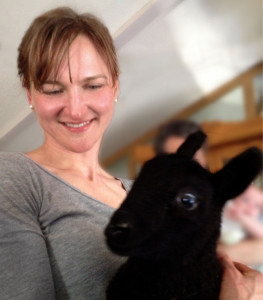
Woman’s Best Friend – June 2016, oil on copper, 4″ x 4″
I have to admit a soft spot for dogs, and I love working to capture these special creatures’ personalities in my portraits.
For my Miniature painting of the month, my mother in law’s best friend Penny posed for me, as many of her barnyard friends have done before her. All my life, a dog has been part of my household and the series wouldn’t be complete without one.
Though dogs are often working members of a farm, Penny is about as useless as my Cavilear King Charles Spaniel as a herd dog. Penny decided sheep were best suited for dinner right around her second birthday. My Mona would never try to kill a sheep, but she certainly wouldn’t dream of herding one either. In fact, when I let my rabbits out into the back yard, my cat would help herd them in. Yes, you read correctly. She was amazing and would chase them into the house. My dog would usually sit in the doorway, blocking their entrance. As useless as working animals as they can be, they are unparalleled in the animal kingdom for their loyalty and companionship and are a must for any house in the country (and the city!).









